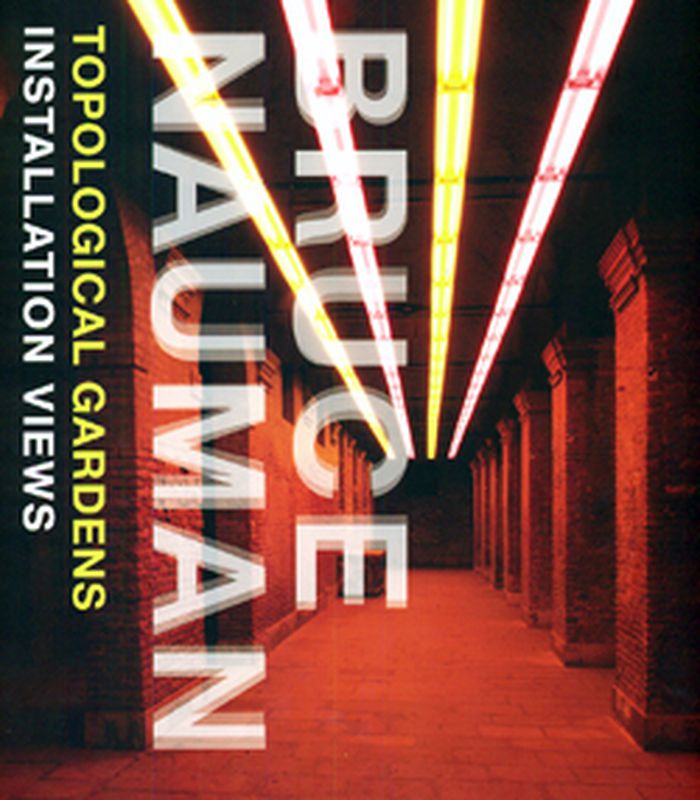$14.95
(disponible sur commande)
Résumé:
With a body of work that encompasses video, installation, drawing, sculpture, printmaking, photography, and neon, and that spans from the 1960s to the present day, Bruce Nauman is one of the most innovative artists of his generation. Through Michele Lamanna’s stunning series of photographs, commissioned by the Philadelphia Museum of Art, this publication captures the(...)
Bruce Nauman: topological gardens, installation views
Actions:
Prix:
$14.95
(disponible sur commande)
Résumé:
With a body of work that encompasses video, installation, drawing, sculpture, printmaking, photography, and neon, and that spans from the 1960s to the present day, Bruce Nauman is one of the most innovative artists of his generation. Through Michele Lamanna’s stunning series of photographs, commissioned by the Philadelphia Museum of Art, this publication captures the visitor’s experience of encountering Nauman’s work and coincides with the American premiere of the artist’s newest works—Days and Giorni—in Philadelphia.
Doris Salcedo
$59.95
(disponible sur commande)
Résumé:
Colombian artist Doris Salcedo (b.1958) is one of today's most internationally respected South American sculptors. Inspired as much by poetry and philosophy as by the affecting material qualities of sculpture, Salcedo subtly and painstakingly transforms everyday household objects and garments - symbols of a vanished existence and of the human tragedies that are its(...)
janvier 2000, London
Doris Salcedo
Actions:
Prix:
$59.95
(disponible sur commande)
Résumé:
Colombian artist Doris Salcedo (b.1958) is one of today's most internationally respected South American sculptors. Inspired as much by poetry and philosophy as by the affecting material qualities of sculpture, Salcedo subtly and painstakingly transforms everyday household objects and garments - symbols of a vanished existence and of the human tragedies that are its cause. In Atrabiliaros (1991-6) abandoned shoes of "disappeared" Colombian people, half-concealed behind membranes of animal fibre, become ghost-like symbols of mourning. In Salcedo's ongoing untitled works, wooden furnishings, worn by long use and filled with concrete, mutely evoke the lives they once served. American art critic Nancy Princenthal surveys Salcedo's work in terms of the universal themes it evokes, contextualized in discussion of contemporary scultural practice. New York-based poet and curator Carlos Basualdo discusses with the artist her formative influences, which range from the art of precedecessors such as Joseph Beuys to the writings of philosophers and poets. German literary critic Andreas Huyssen focuses on Salcedo's sculpture Unland: The Orphan's Tunic (1997). For the "Arist's Choice", Salcedo has selected two texts: an extract from "Otherwise than being" (1974) by philosopher Emmanuel Levinas, and poems by Paul Celan. The Doris Salcedo's observations on the human condition and its reflection in the work of poets, novelists and thinkers are discussed in conversation with art historian Charles Merewether.
$72.00
(disponible sur commande)
Résumé:
SYSTEMS gives the first comprehensive overview of Jeanne van Heeswijk’s socially engaged artistic practice from the past decade. The book presents models for the design of social spaces as well as directions for the analysis of social structures. The first chapter is dedicated to the games people play. Games are rehearsals of social interactions; they simulate reality(...)
octobre 2007, Berlin
Systems : play, inhabit, create
Actions:
Prix:
$72.00
(disponible sur commande)
Résumé:
SYSTEMS gives the first comprehensive overview of Jeanne van Heeswijk’s socially engaged artistic practice from the past decade. The book presents models for the design of social spaces as well as directions for the analysis of social structures. The first chapter is dedicated to the games people play. Games are rehearsals of social interactions; they simulate reality and are open to experimentation; their rules establish limits within which freedom of action is possible. The second chapter investigates rooms people inhabit, i.e. the urban structures of social cohabitation. Here, external reference points of social conditioning can be found. The third chapter deals with the communities people create, as structures of individual, artistic positioning. With texts by Carlos Basualdo, Marjolein Schaap and Axel Lapp.


